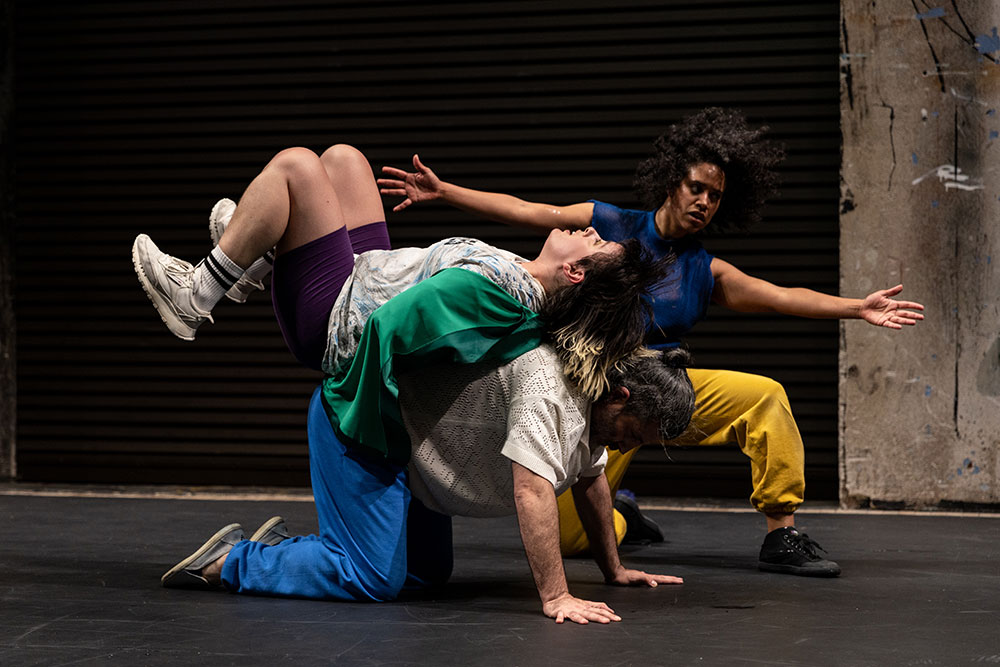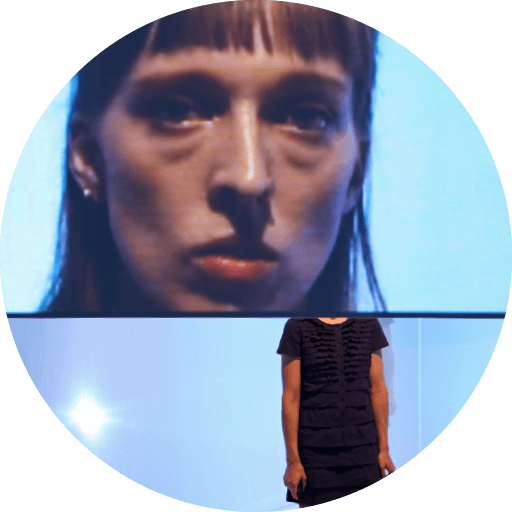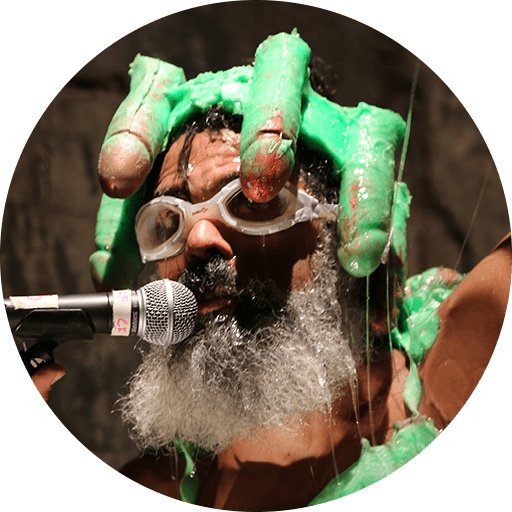Review: Dispassionate Traumas and Choral Dream Songs
Brian Seibert, The New York Times
Brian Seibert, The New York Times

What’s wrong with these people?
That’s not a question that a sophisticated viewer of postmodern dance is supposed to ask. But it was going through my mind as I watched the first half of Juliana F. May’s “Family Happiness” at the Abrons Arts Center on Saturday.
Seated on the stage of the center’s Playhouse Theater, we are close to five dancers, who wander in many directions, dressed comfortably in motley tops and sweatpants or shorts. Periodically, they pull their pants down to their ankles and hop or crawl around awkwardly, then pull them back up, only to pull them down again. Sometimes, they crawl between each others’ legs or through the hole between legs and clothing stretched between ankles.
During all this, there are synthesizer fanfares befitting a vintage video game, along with some drums and low bleats for drive and the occasional unsettling addition of high-pitched noises. (The sound design is by Tatyana Tenenbaum.) The dancers also make noises with their mouths, or roll their tongues. Sections of movement repeat, but the dominant impression is of the performers going and going, relentlessly but dispassionately.
Since May’s previous works have addressed various kinds of trauma, including sexual violence, I started to wonder about the undressing — about what might have happened to these people to make them behave this way. But not as much as I wondered why a choreographer and cast would choose to linger in such a dull mode. It’s a chore, for them and us.
And then I thought I saw something shift in the face of Kavyon Pourazar, the sole man in a cast full of dancers I’ve admired in other works. And sure enough, a little while later, he pushed Tess Dworman and Molly Poerstel around, just for an instant, a flicker of abuse. It was almost a tease since the dance continued as before, or almost as before. Then all the dancers exited, giving us a moment to ponder what we had just seen.
Was the question in my mind the kind that “Family Happiness” (a co-commission by Abrons and the Chocolate Factory Theater) intends to provoke? It wasn’t until after the show that I read May’s program note about “exposing the titillation of postmodernism’s detached aesthetics and its unbearable absurdity.” Hiding hot content in dull form might be the point, critiquing that approach by reproducing it — a punishing exercise that stops short of absurdity.
The second part of the 45-minute work doesn’t clarify the intent so much as escape the problem?, transposing the content into a much more engaging key. The performers break into song — first Leslie Cuyjet and Lucy Kaminsky, then the others, in unison and then in counterpoint, at first stationary and then in shifting formations.
The profane text they sing is a fragmented, stream-of-consciousness poem, drawing perhaps from dreams. It touches on topics like sexual role playing, sex beaches and face eating, but also on ordinary insecurities and talking dogs — a mix of memory, sensation and fantasy. There is an “I” and a “you,” but they are unstable, an effect that’s amplified and complicated by the choral singing.
What the group sings seems like one person’s subconscious, a self trying to keep afloat with less-than-convincing assertions like “I am fine” and “I’m back in action.” Maybe that self is May’s, maybe not. It’s not entirely clear how the two parts of “Family Happiness” speak to each other, but they do expose a contrast between emotionally detached tasks and dreams vocalized by a group. Sung in chorus, the words don’t sound like happiness, but they do sound more like family.
Brian Seibert for The New York Times, May 8 2023





























